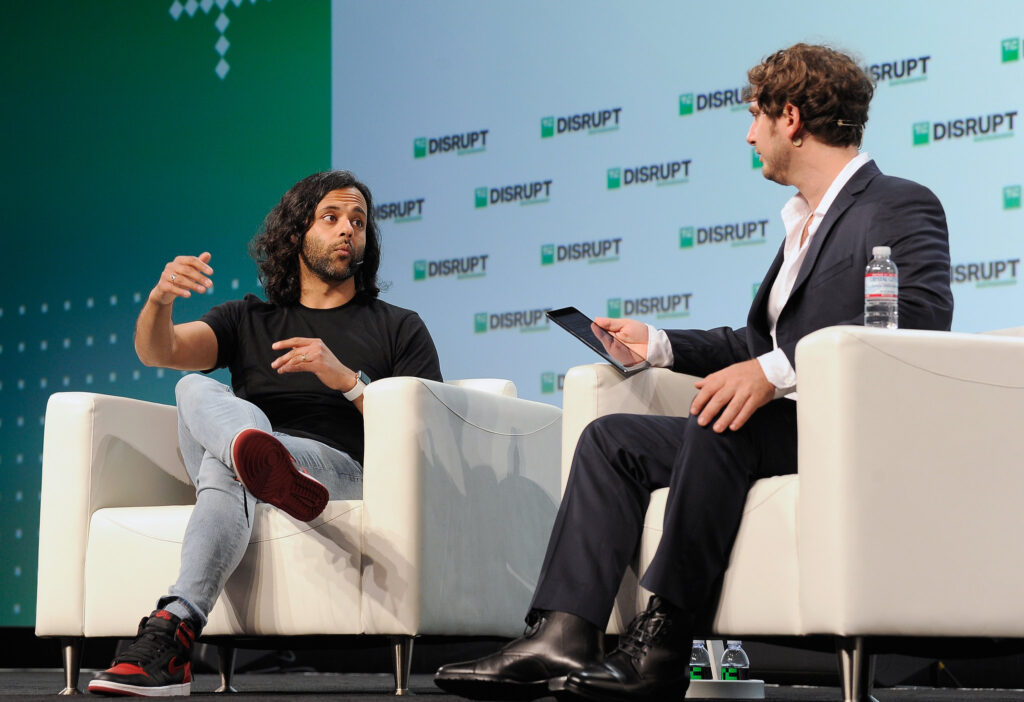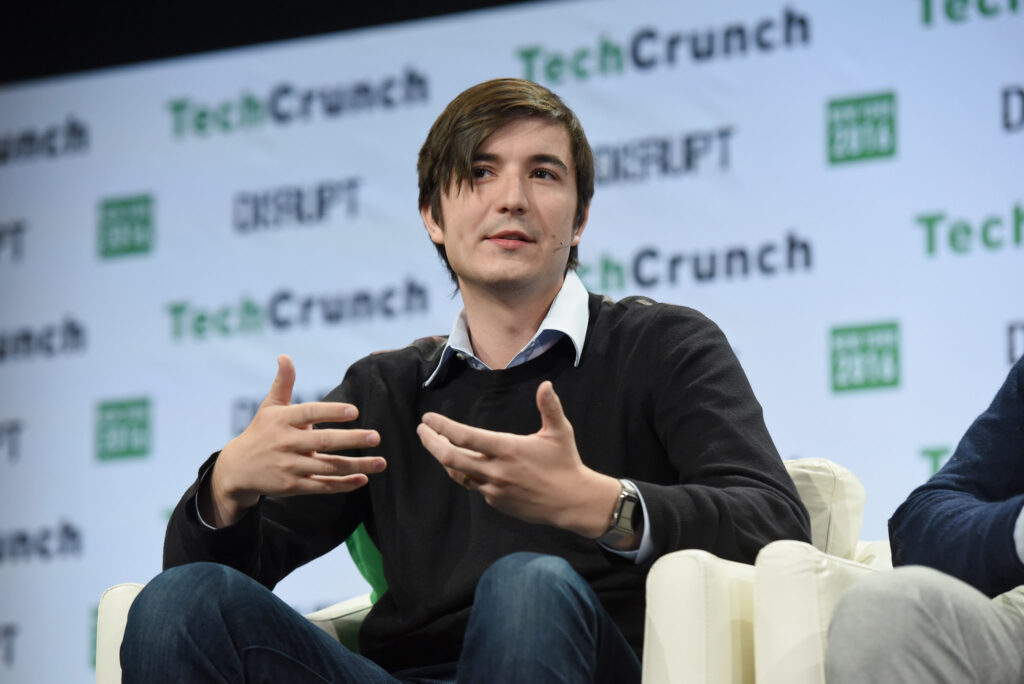The Startup Story of Robinhood and Its Founders – Vladimir Tenev and Baiju Bhatt
Robinhood, a financial services company renowned for its commission-free trading, has revolutionized the investment landscape. Founded by Vladimir Tenev and Baiju Bhatt in 2013, Robinhood has grown rapidly, attracting millions of users with its user-friendly mobile app and innovative approach to trading. This article delves into the fascinating journey of Robinhood and its founders, exploring their backgrounds, the challenges they faced, and the impact they have made on the financial industry.
The Founders: Vladimir Tenev and Baiju Bhatt
Background and Early Careers
Vladimir Tenev and Baiju Bhatt both hail from academic backgrounds with strong ties to the financial and technological sectors. Tenev was born in Bulgaria and moved to the United States at a young age. He attended Stanford University, where he met Bhatt, and later pursued a PhD in mathematics at UCLA before dropping out to focus on his entrepreneurial ventures.
Baiju Bhatt, the son of Indian immigrants, also attended Stanford University, where he studied physics. The duo’s shared interest in technology and finance laid the foundation for their future collaboration. Both Tenev and Bhatt were influenced by their experiences working in high-frequency trading firms, where they noticed the high fees and barriers to entry for retail investors.
The Genesis of Robinhood
Inspiration and Vision
The idea for Robinhood was born out of Tenev and Bhatt’s desire to democratize access to financial markets. They observed that traditional brokerage firms charged high commissions, making it difficult for average individuals to invest in the stock market. Their vision was to create a platform that would eliminate these barriers, offering commission-free trading to make investing accessible to everyone.

Baiju Bhatt, San Francisco, Sept 6 2018
Source: https://www.flickr.com/photos/techcrunch/43802636014/
Building the Platform
Tenev and Bhatt founded Robinhood in April 2013. The initial phase involved significant technical challenges as they aimed to build a robust, user-friendly trading platform. The founders focused on creating a mobile-first application, recognizing the growing trend of mobile internet usage. They believed that a mobile app would provide a convenient and accessible way for users to manage their investments.
The Launch and Initial Challenges
Early Funding and Support
To bring their vision to life, Tenev and Bhatt secured seed funding from notable investors, including Google Ventures, Index Ventures, and Andreessen Horowitz. This initial capital was crucial for developing the platform and marketing it to potential users. The founders also participated in the prestigious startup accelerator Y Combinator, which provided additional mentorship and resources.
Beta Testing and Feedback
Before the official launch, Robinhood underwent extensive beta testing. This phase allowed the founders to gather valuable feedback from early users and refine the app’s features. The beta version quickly gained traction, with over 500,000 people signing up for the waitlist within a few months. This overwhelming response validated Tenev and Bhatt’s vision and demonstrated a strong demand for a commission-free trading platform.
Official Launch and Rapid Growth
Public Launch
Robinhood officially launched to the public in March 2015. The app’s user-friendly interface, combined with the promise of commission-free trading, attracted a large number of users. By the end of 2015, Robinhood had over one million users, a testament to its popularity and the appeal of its innovative approach.
Growth and Expansion
The rapid growth of Robinhood continued in the subsequent years. The company introduced several new features, including instant deposits, options trading, and access to cryptocurrency markets. These additions enhanced the app’s functionality and attracted a broader range of investors. By 2018, Robinhood had expanded its user base to over six million, and its valuation soared to $5.6 billion following a successful Series D funding round.
Impact on the Financial Industry
Democratizing Finance
Robinhood’s commission-free trading model forced traditional brokerage firms to rethink their fee structures. Many established brokers, such as Charles Schwab and E*TRADE, eventually eliminated their commission fees in response to Robinhood’s competitive pressure. This shift marked a significant change in the industry, making investing more affordable for retail investors.
Controversies and Challenges
Despite its success, Robinhood has faced its share of controversies and challenges. The company’s rapid growth has occasionally outpaced its ability to provide adequate customer support, leading to criticism from users. Additionally, Robinhood’s role in the GameStop trading frenzy in early 2021 drew significant scrutiny. The company temporarily restricted trading in certain stocks, prompting backlash from users, lawmakers, and regulators.

Vladimir Tenev, New York, May 10, 2016 Source: https://www.flickr.com/photos/techcrunch/26841509412/
The Future of Robinhood
Going Public
In July 2021, Robinhood went public with an initial public offering (IPO) on the Nasdaq under the ticker symbol HOOD. The IPO was a significant milestone for the company, raising $2.1 billion and valuing Robinhood at approximately $32 billion. The public listing provided Robinhood with additional capital to expand its services and continue its mission of democratizing finance.
Expanding Services
Looking ahead, Robinhood aims to further expand its product offerings and enhance its platform. The company plans to introduce new financial products, including retirement accounts and additional investment options. Robinhood also seeks to improve its educational resources, helping users make informed investment decisions.
Robinhood’s journey from a startup to a major player in the financial industry is a testament to the vision and determination of its founders, Vladimir Tenev and Baiju Bhatt. Their innovative approach to eliminating trading commissions and creating a user-friendly mobile app has transformed the way people invest. Despite facing challenges and controversies, Robinhood continues to shape the future of finance by making investing accessible to all. The company’s ongoing efforts to expand its services and improve user experience position it well for continued growth and impact in the years to come.
10 Interesting Facts About Robinhood and Its Founders
1. Founders’ Academic Backgrounds
- Vladimir Tenev and Baiju Bhatt both attended Stanford University, where they met and developed a shared vision for democratizing finance. Tenev studied mathematics, while Bhatt studied physics .
2. High-Frequency Trading Roots
- Before founding Robinhood, Tenev and Bhatt launched two finance companies focused on high-frequency trading software for hedge funds. Their experience in this industry highlighted the high costs of trading for retail investors, inspiring them to create Robinhood .
3. Inspiration Behind the Name
- The name “Robinhood” reflects the company’s mission to “provide everyone with access to the financial markets, not just the wealthy,” paralleling the folklore hero who “robbed from the rich to give to the poor” .
4. Record-Breaking Waitlist
- Before its official launch, Robinhood garnered a waitlist of over 500,000 people, indicating massive interest and anticipation for a commission-free trading platform.
5. First to Introduce Commission-Free Trading
- Robinhood was the first brokerage to offer commission-free trades, disrupting the traditional brokerage industry. This innovation forced many established brokers to eliminate their own trading fees.
6. Rapid User Growth
- Within five years of its launch, Robinhood amassed over 6 million users. By 2021, the platform had more than 18 million users, showcasing its rapid adoption and popularity among retail investors.
7. Expansion into Cryptocurrencies
- In 2018, Robinhood expanded its services to include cryptocurrency trading, allowing users to trade Bitcoin, Ethereum, and other cryptocurrencies without fees. This move attracted a new segment of tech-savvy investors.
8. Robinhood Gold
- Robinhood offers a premium subscription service called Robinhood Gold, which provides features like margin trading, larger instant deposits, and access to professional research reports. This service caters to more advanced traders .
9. GameStop Trading Frenzy
- Robinhood played a central role in the GameStop trading frenzy of January 2021. The platform temporarily restricted trading of certain stocks, including GameStop, due to market volatility and regulatory requirements. This decision led to widespread criticism and scrutiny from users and regulators .
10. Going Public
- Robinhood went public on July 29, 2021, with an initial public offering (IPO) on the Nasdaq under the ticker symbol HOOD. The IPO raised $2.1 billion, valuing the company at around $32 billion .
These facts highlight the innovative and disruptive journey of Robinhood and its founders, showcasing how they have transformed the financial services industry by making investing more accessible to the masses.
Funding Rounds The Robinhood Had So Far
Robinhood has raised significant funding through multiple rounds since its inception. Here’s a detailed look at the major funding rounds Robinhood has received:
Seed Round
- Date: 2013
- Amount: $3 million
- Investors: Notable investors included Google Ventures (GV), Index Ventures, and Andreessen Horowitz.
- Purpose: This initial funding was crucial for the development of the Robinhood platform and early-stage operations.
Series A
- Date: September 2014
- Amount: $13 million
- Investors: Led by Index Ventures, with participation from Ribbit Capital, Social Leverage, and others.
- Purpose: The Series A round helped Robinhood officially launch its commission-free trading app and expand its team.
Series B
- Date: May 2015
- Amount: $50 million
- Investors: Led by New Enterprise Associates (NEA) with participation from Index Ventures and Ribbit Capital.
- Purpose: This round facilitated the expansion of Robinhood’s product offerings and user base.
Series C
- Date: April 2017
- Amount: $110 million
- Investors: Led by DST Global, with participation from existing investors.
- Purpose: Funding from this round was used to introduce new features like margin trading and expand customer support.
Series D
- Date: March 2018
- Amount: $363 million
- Investors: Led by DST Global, with participation from Iconiq, Sequoia Capital, and others.
- Purpose: This funding round valued Robinhood at $5.6 billion and supported the launch of Robinhood Crypto, enabling cryptocurrency trading on the platform.
Series E
- Date: July 2019
- Amount: $323 million
- Investors: Led by DST Global, with participation from Ribbit Capital, NEA, and others.
- Purpose: This round aimed at expanding Robinhood’s financial education resources and scaling the platform’s infrastructure.
Series F
- Date: May 2020
- Amount: $280 million
- Investors: Led by Sequoia Capital, with participation from NEA, Ribbit Capital, and others.
- Purpose: The Series F round focused on enhancing the platform’s stability and performance amid a surge in new users and trading activity.
Additional Series F Extension
- Date: August 2020
- Amount: $200 million
- Investors: Led by D1 Capital Partners.
- Purpose: This extension raised Robinhood’s valuation to $11.2 billion, providing additional capital to manage the increased trading volume and expand its product offerings.
Series G
- Date: September 2020
- Amount: $460 million
- Investors: Led by Andreessen Horowitz, Sequoia, Ribbit Capital, 9Yards Capital, and D1 Capital Partners.
- Purpose: This round was used to support further expansion and infrastructure improvements, raising the company’s valuation to $11.7 billion.
Pre-IPO Funding
- Date: February 2021
- Amount: $3.4 billion
- Investors: Led by Ribbit Capital and included Iconiq Capital, Andreessen Horowitz, Sequoia, Index Ventures, and NEA.
- Purpose: The funds were raised to bolster Robinhood’s balance sheet and support its operations ahead of the anticipated IPO.
Initial Public Offering (IPO)
- Date: July 2021
- Amount Raised: $2.1 billion
- Valuation: Approximately $32 billion
- Purpose: The IPO on the Nasdaq under the ticker symbol HOOD provided Robinhood with significant capital to expand its services, enhance its platform, and grow its user base.
Overall
Robinhood’s funding journey reflects its rapid growth and the strong investor interest in its innovative approach to democratizing finance. The company has successfully leveraged these investments to expand its offerings, enhance its technology, and increase its market presence. As a result, Robinhood continues to play a pivotal role in reshaping the financial services industry.
Sources
- Robinhood Official Site
- Forbes: The Story of Robinhood Founders
- TechCrunch: Robinhood’s Journey
- Investopedia: Robinhood Review
- NY Times: The Robinhood Phenomenon






